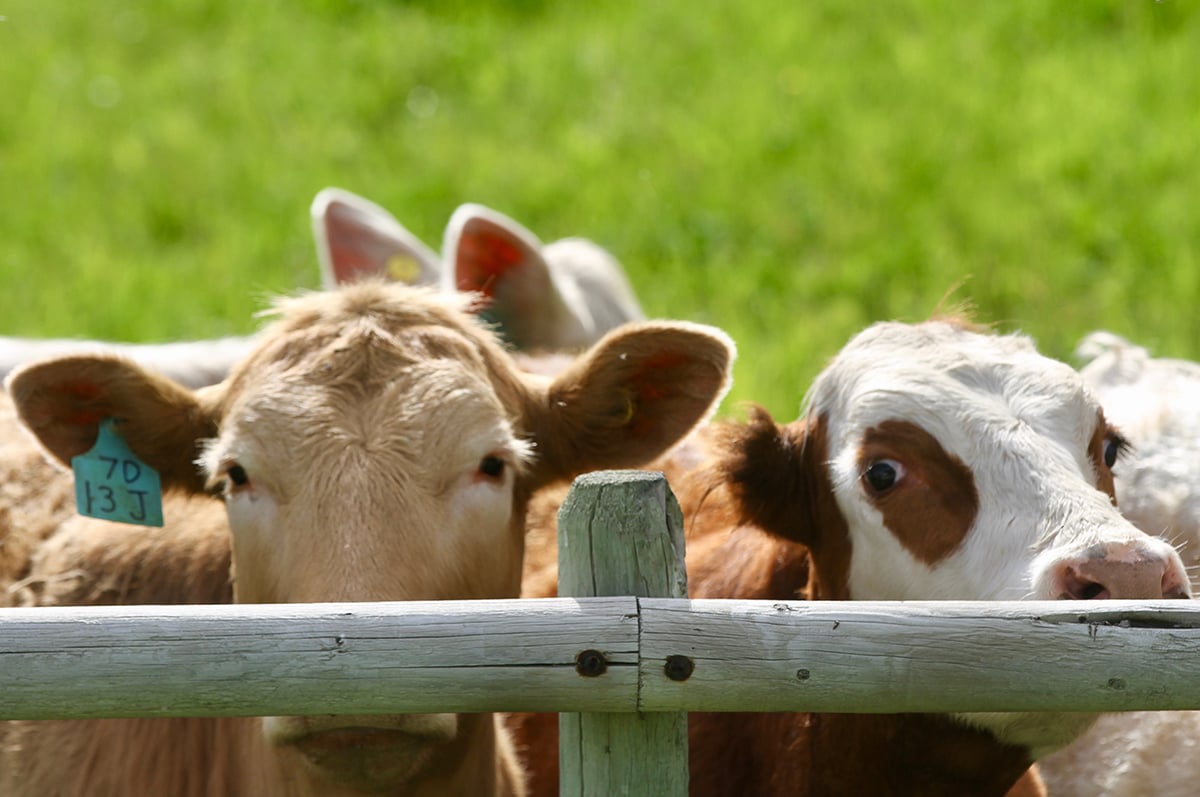The current outbreak of bovine tuberculosis in Alberta has caused significant problems for many cow-calf producers who have had their herds quarantined as a result of the investigation by the Canadian Food Inspection Agency.
The timing of the outbreak, which has also led to quarantines in parts of Saskatchewan, has made it difficult for producers to sell their weaned calves as they wait for the investigation to advance. The diagnostic testing for infection with Mycobacterium bovis is labourious and involves the injection of tuberculin into the skin fold beneath the tail and then measuring the reaction in that skin fold 48 to 72 hours later.
Read Also

Feeder market consolidates at historic highs
For the week ending Sept. 6, Western Canadian feeder cattle markets were relatively unchanged compared to seven days earlier.
This obviously involves running the entire herd through the handling facility on two separate occasions. There are also blood tests that may be used as an adjunct to skin testing.
None of the diagnosic tests are perfect and false positives can occur. For that reason, test positive animals are humanely slaughtered and tissue samples are examined and tested with a number of laboratory tests by pathologists. If those test negative, culture methods are then employed. Culture takes eight to 12 weeks because it involves a slow-growing bacteria.
Many countries have attempted to control or eliminate bovine tuberculosis from their cattle herds. Canada has had a control program in place since 1923.
The World Organization for Animal Health (OIE) will declare a country or zone as bovine-TB free when regular testing of all cattle demonstrate that Mycobacterium bovis infection was not present in at least 99.8 percent of the herds and 99.9 percent of the cattle in the country or zone for three consecutive years.
However, despite significant efforts at control, bovine TB continues to be reported. In some situations, a wildlife host can be part of the transmission dynamics, which can complicate the problem.
In Canada, we have two known wildlife reservoirs of Mycobacterium bovis, both occurring within national parks. Wood bison in and around Wood Buffalo National Park in northern Alberta and the Northwest Territories have had the longest history of TB.
Mycobacterium bovis has never spilled over into domestic animal populations from this wildlife reservoir to date and while a possibility, it is unlikely to occur because of the relative isolation of the bison population from cattle.
In 1992, an infected male elk was found in the Rural Municipality of Rossburn south of Riding Mountain National Park in Manitoba. The greater Riding Mountain ecosystem has had two closely related strains of Mycobacterium bovis isolated from elk, deer and cattle in this area and has been a focus of increased bovine tuberculosis surveillance.
The source of this wildlife reservoir has never been conclusively determined, although it may have originated from cattle that grazed within the park before 1970 or from infected Plains bison that were held in a display pen in the park starting in 1931.
There are many other examples of bovine tuberculosis outbreaks associated with wildlife species throughout the world. In some cases, the wildlife species infected is a maintenance host that can permanently maintain the infection and subsequently transmit it to other populations. Such is the case with the brush-tailed possum in New Zealand, the European badger in the United Kingdom and Ireland, and white-tailed deer in Michigan.
In other cases, the wildlife population will only be a spillover host in which the infection will die out once it is controlled in the primary species of interest. In Australia, feral pigs were considered a spillover host for M. bovis, and the infections disappeared in that species once it was controlled in the primary species, the feral water buffalo. Wild boar are also spillover hosts in New Zealand.
However, in Spain, wild boar are considered maintenance hosts because their population is much more concentrated, which makes transmission between wild pigs more likely.
Wildlife reservoirs make control of bovine tuberculosis more difficult due to the problems with spillback infections from infected wildlife. Infected cattle farms were discovered in northwestern Minnesota in 2007 and white-tailed deer were found infected in close proximity to these farms.
A reduction in deer density in the affected counties through hunting in combination with a buyout of cattle farms in a defined core area seems to have eliminated bovine tuberculosis from this wildlife reservoir through rapid intensive management.
This has not been the case in Michigan, where the common practice of deer baiting for hunting has allowed the infection to continue.
I don’t believe the source of the current outbreak in Alberta is known for certain, but I am sure that the veterinarians involved in the CFIA investigation will also be trying to sort out whether a wildlife population is involved or if it is caused by transmission from cattle.
This work will take time and we will hope that the herds currently quarantined will all test negative so they can get back to normal business as soon as possible.














